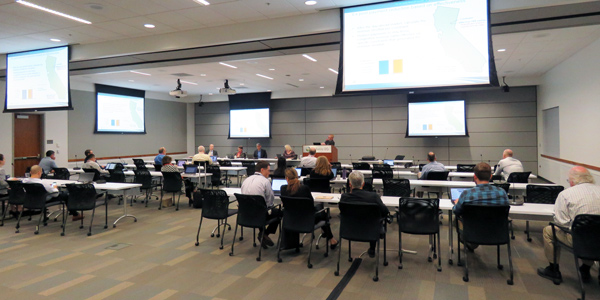By Jason Fordney
FOLSOM, Calif. — CAISO is advancing into the second phase of reforms to its congestion revenue rights auction, focusing on implementing a structure that provides only a partial congestion hedge rather than a full one.
The ISO is moving through auction reforms in stages after its Department of Market Monitoring called for disbanding the program; it found the transactions have led to losses in the hundreds of millions for ratepayers. (See CAISO Monitor Proposes to End Revenue Rights Auction.) Financial entities and traders have objected to the changes, leading to a complex debate over the current structure and whether it is fair for ratepayers. Similar discussions are going on in other organized markets over financial transmission rights.
The ISO has already completed “Track 1A” of its CRR auction changes, unanimously approved by the Board of Governors last month. (See CAISO Moves Ahead With Market Changes.) At the meeting, board members agreed with the Monitor’s contention that the CRR market as currently devised it is not a real auction because it does not involve willing buyers and sellers.
Auction participants can currently purchase CRRs at generator locations, load locations, trading hubs, pricing nodes, and import and export scheduling points, but the changes proposed in Track 1A limit CRR sources and sinks to only the combinations needed to hedge congestion costs associated with delivering supply. The revisions also established a deadline for reporting transmission outages prior to the auctions to more accurately estimate transmission capacity available for CRR purchases.
Partially funded CRRs
CAISO is now developing changes under “Track 1B,” targeted for June approval by the board and implementation in time for settlement of the 2019 CRR auction. Under consideration for this track is a switch from fully funded CRRs — in which the auctioned rights provide a complete hedge and always receive a full difference in marginal congestion components — to a partial funding arrangement.
Other ISOs and RTOs only partially fund FTRs, relying on a system in which auctioned rights share in payment shortfalls and do not provide a complete hedge, CAISO Market Design Policy Developer Perry Servedio said Thursday in a presentation to the ISO’s Market Surveillance Committee (MSC).
CAISO also plans to develop a “Track 2” set of rule changes consisting of more comprehensive changes to be implemented in time for the 2020 CRR auction.
The ISO is considering two approaches to partially funding CRRs. One is an ex ante approach in which the ISO derates CRRs prior to the day-ahead market. This would allow market participants to adjust their forward energy positions prior to the day-ahead market to hedge final supply delivery.
Another ex post approach would charge CRR holders for shortfalls after the day-ahead market, which could eliminate incentives by market participants to “game” modeling differences between the CRR market and day-ahead market, CAISO said.
Other approaches are also under consideration, including lowering the percentage of system capacity released in the CRR process, eliminating use of the whole transmission system in the auction or implementing reserve prices.
CAISO Considers MSC Viewpoints

At Thursday’s meeting, Scott Harvey of FTI Consulting briefed Servedio and other CAISO staff with a presentation on what he said could be other factors contributing to CRR auction revenue inadequacy, including the fact that CRRs are allocated and auctioned based on auction shift factors but are settled based on day-ahead shift factors.
MSC members James Bushnell, of the University of California Davis, and Ben Hobbs, of Johns Hopkins University, also raised issues with one CRR proposal developed by Southern California Edison and the Monitor that would eliminate using the available transmission system in the CRR auction, saying the move would have technical, institutional and legal implications.
“Even if there is large-scale willing participation by sellers, forming desired new CRRs out of offered counterflow CRRs may be difficult or unlikely,” they said.
After the Track 1B process is complete, CAISO says it will embark on Track 2 in time for the 2020 auction with “potential comprehensive changes.” The ongoing overhaul indicates the current CRR process is due to change significantly in coming years.





